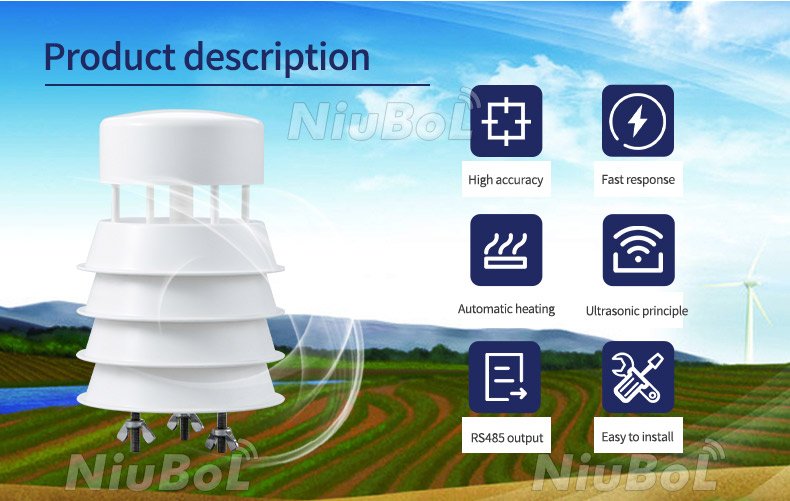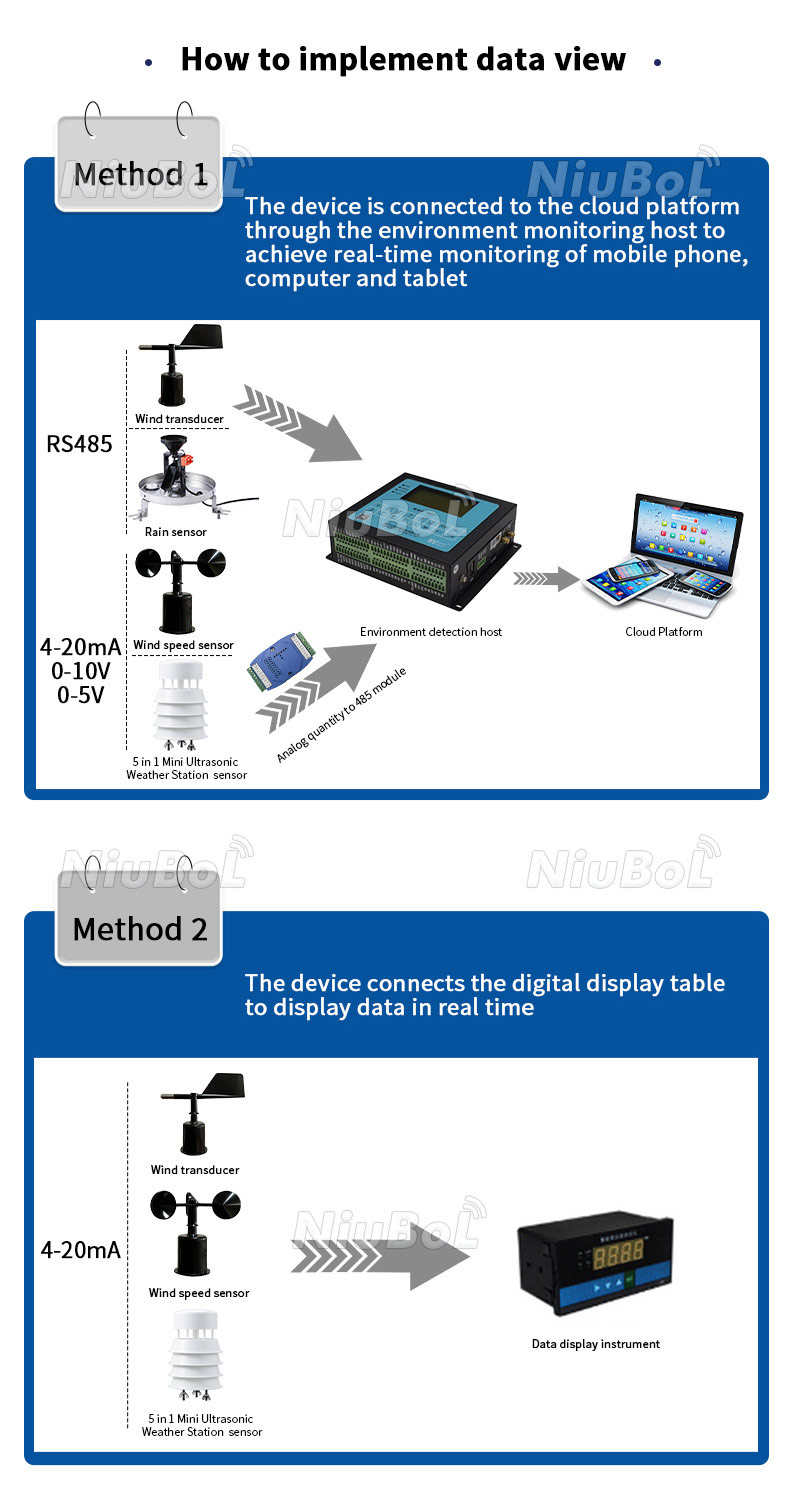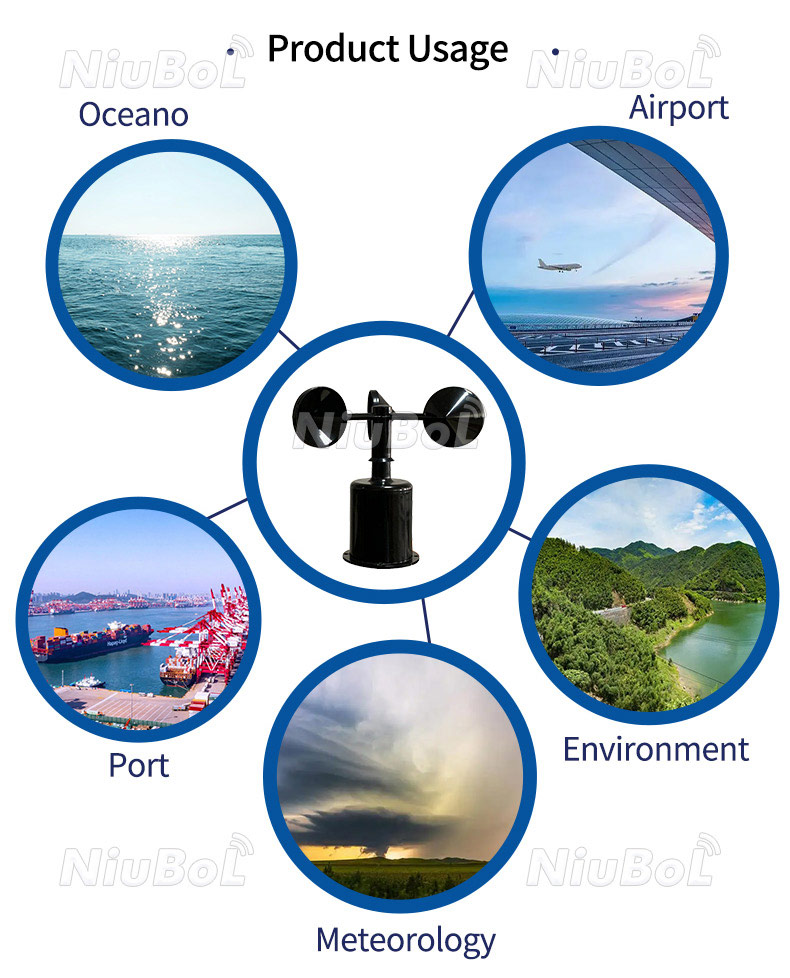

— Blogs —
—Products—
 Consumer hotline +8618073152920
Consumer hotline +8618073152920 WhatsApp:+8615367865107
Address:Room 102, District D, Houhu Industrial Park, Yuelu District, Changsha City, Hunan Province, China
Product knowledge
Time:2024-02-27 15:51:23 Popularity:1967
An anemometer sensor is a device used to measure wind speed and direction. It is a key tool for meteorologists, wind energy professionals, and anyone else who needs to monitor the speed and direction of the wind. The word "anemometer" comes from the Greek word "anemos," which means wind.
An anemometer sensor is a device designed to measure wind speed, capturing and quantifying the speed of air flow in real time. Depending on the design and principle, anemometer sensors can be categorized into several types, the most common of which are mechanical (e.g., propeller, wind cup), hot air, Pitot tube, and ultrasonic based on acoustic principles.
This type of sensor is mounted on the front of the wind vane by a set of three- or four-bladed propellers so that their plane of rotation is always aligned with the direction of the wind. When the wind force acts on the blades, the blade system rotates due to the torsional moment generated by the wind pressure. The rotational speed of the blades is directly proportional to the wind speed. By measuring the rotational speed of the blades, the wind speed can be calculated.
The wind cup sensor consists of three or four hollow cup-shaped structure, these cups are mounted on each other at a certain angle to the support, around the vertical axis of rotation. When the wind blows, the asymmetric design of the cups causes some of the cups to be subjected to greater wind pressure than others, generating a rotational moment. The higher the wind speed, the faster the cups rotate. The rotational speed is converted mechanically or electronically into a wind speed reading.
These sensors utilize the cooling effect of air flowing over a heating element to measure wind speed. The temperature change of the heating element is proportional to the speed of the airflow through it, and by monitoring the temperature change of the heating element, the wind speed can be deduced.

Based on the principle that the propagation speed of sound waves in air is affected by wind speed, ultrasonic wind speed sensors transmit and receive ultrasonic signals. Since wind speed causes differences in the time it takes for sound waves to propagate in different directions, wind speed can be accurately determined by calculating these time differences. This method is independent of wind direction and is highly accurate.
Each anemometer sensor has its own specific application scenarios and advantages, and factors such as measurement accuracy, environmental conditions, cost, and maintenance requirements need to be considered when selecting one.
The primary use of a wind anemometer is to measure the speed of the wind, which is information that is critical for a variety of applications:
1. Meteorology: Weather forecasters use anemometer data to predict weather patterns, understand storm dynamics, and provide accurate wind speed and direction forecasts.
2. Wind Energy: Anemometers are essential for the wind energy industry to assess the potential of wind power at different locations. They help in determining the suitability of sites for wind turbines and in optimizing the placement and orientation of turbines to maximize efficiency and energy production.
3. Engineering and Construction: Architects and engineers use anemometer data to design structures that can withstand local wind conditions. Anemometers help in assessing wind patterns around buildings, bridges, and other structures to prevent wind-related damage.

4. Environmental Monitoring: Anemometers are used to study the dispersal of pollutants, seeds, and other particles in the atmosphere. They help in understanding the impact of wind on ecosystems and in monitoring the spread of airborne contaminants.
5. Outdoor Sports and Recreation: Athletes and enthusiasts in sports such as sailing, kiteboarding, paragliding, and windsurfing use anemometer data to assess weather conditions and ensure safety. Knowledge of wind speed and direction is crucial for performance and strategy in these activities.
6. Agricultural and Farming: Farmers use anemometers to monitor wind speed, which can affect the growth of crops and the operation of agricultural machinery.
7. Research: Scientists use anemometers in various research fields, including climatology, geophysics, and ecology, to collect data on wind patterns and phenomena.

Anemometers can be simple mechanical devices with cups that spin in the wind or more sophisticated electronic sensors that use technologies like ultrasound, hot-wire, or cup anemometers to measure wind speed with high precision. They can also be equipped with wind direction sensors and, in some cases, be part of a weather station that provides a comprehensive set of environmental data.
Related recommendations
Sensors & Weather Stations Catalog
Agriculture Sensors and Weather Stations Catalog-NiuBoL.pdf
Weather Stations Catalog-NiuBoL.pdf
Related products
 Combined air temperature and relative humidity sensor
Combined air temperature and relative humidity sensor Soil Moisture Temperature sensor for irrigation
Soil Moisture Temperature sensor for irrigation Soil pH sensor RS485 soil Testing instrument soil ph meter for agriculture
Soil pH sensor RS485 soil Testing instrument soil ph meter for agriculture Wind Speed sensor Output Modbus/RS485/Analog/0-5V/4-20mA
Wind Speed sensor Output Modbus/RS485/Analog/0-5V/4-20mA Tipping bucket rain gauge for weather monitoring auto rainfall sensor RS485/Outdoor/stainless steel
Tipping bucket rain gauge for weather monitoring auto rainfall sensor RS485/Outdoor/stainless steel Pyranometer Solar Radiation Sensor 4-20mA/RS485
Pyranometer Solar Radiation Sensor 4-20mA/RS485
Screenshot, WhatsApp to identify the QR code
WhatsApp number:+8615367865107
(Click on WhatsApp to copy and add friends)
